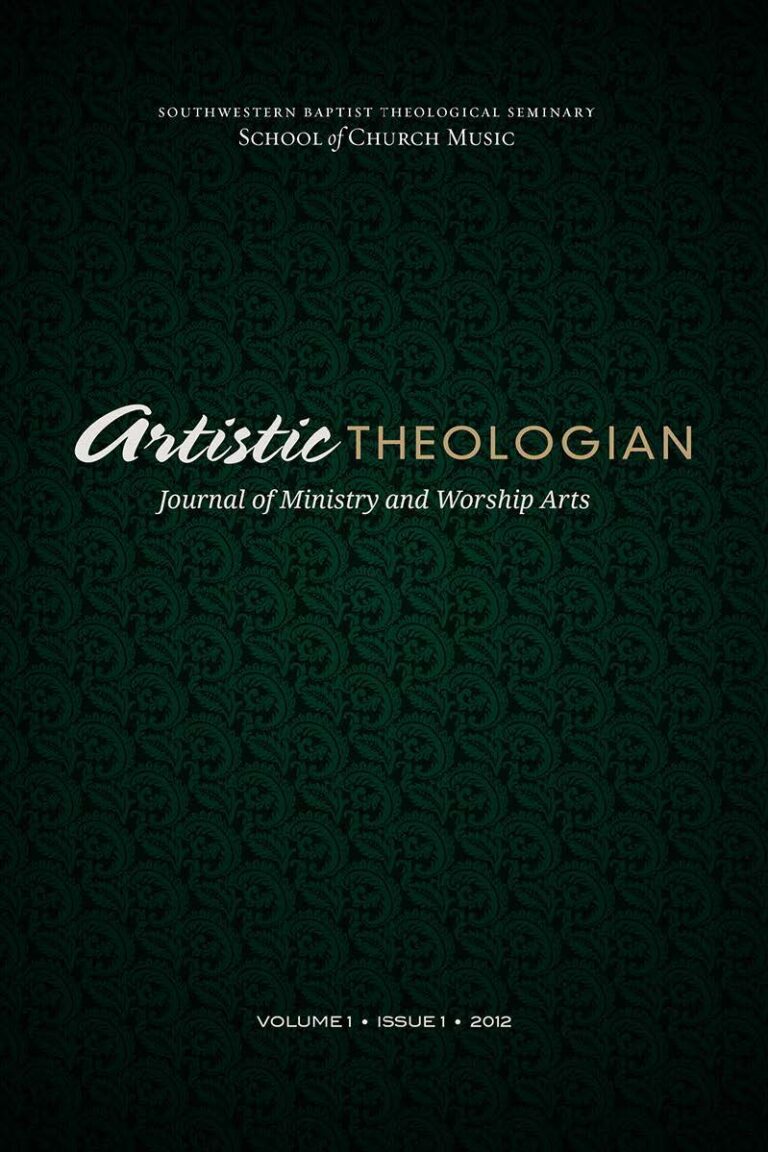
Introducing The Artistic Theologian
Artistic Theologian
Volume 1, Summer 2012
Editor-in-Chief: John E. Simons
Truth, Goodness, and Beauty Reframed: Educating for the Virtues in the Twenty-First Century, by Howard Gardner. New York: Basic Books, 2011. 244 pp. $25.99.
Howard Gardner is a developmental psychologist and professor at Harvard University. Gardner is best known for his work with multiple intelligences, but he steps aside from his magnum opus to consider the realms of truth, beauty, and goodness in light of a postmodern digital world. The journey to conceptualize this trio is essential, for “if we give up lives marked by truth, beauty, and goodness—or at least the perennial quest for them—to all intents and purposes, we resign ourselves to a world where nothing is of value, where anything goes” (7).
The first virtue Gardner examines is truth. Influencing his work on this virtue is his presupposition, “I do not believe that we can ever establish truth so reliable, that any statement, let alone any set of statements, can be ruled as inviolably true, for all time, and under all circumstances” (20). He states elsewhere, “The notion of a single truth, or a single standard of truth now seems hopelessly simpleminded” (34). Gardner examines how truth can be established in a postmodern digital age (35) and concludes, “The search for truth is fundamentally misplaced in the arts, but . . . the litmus test of authenticity, of feeling ‘right,’ may be appropriate” (36).
Gardner asserts that the virtue of beauty must be redefined because “our views of which experiences are beautiful, and why they are beautiful, have changed quite a lot” (41). Gardner casts his reconceptualization of beauty in the following three antecedent features, which are “symptomatic” of artistic beauty: “The object is interesting; its form is memorable; it invites further encounters” (49). The pursuit of beauty has become a personalized quest in which each person must determine the significance of these three features on an individual basis (55).
Gardner traces the conceptualization of goodness through historical communities of thought but shows a necessity to alter traditional conceptualizations because “the roles that are part and parcel of any complex society regularly produce quandaries that could not have been anticipated in earlier times” (82). In seeking to redefine goodness he juxtaposes morality and ethics, the former being a neighborhood concept and the latter a concept appropriate to complex societies (83). Good, as related through the concepts of ethics and morality, will continue evolving because of relativistic thought and the importance of digital media (105).
After examining each virtue individually, the focus of the book shifts to application of and instruction in these areas at different life stages. “As educators, we must help young people to discern the inadequacies of their earlier folk beliefs, and to construct better, more veridical accounts” (127). “Our goal in the arts should be the development, in each person, of a portfolio of personal preferences, and the reasons for them, and, as appropriate, a record of what seems beautiful, and why” (142). In his application of these virtues, Gardner explains that cognitive development does not end in late childhood as previously espoused but continues throughout much of adult life (158). The virtues will be viewed differently in each stage, but they cannot be of lessened importance at any stage in the current postmodern digital age.
Gardner’s entire work must be called into question because it is written from a non-Christian worldview. He admits his bias, stating he is “not a religious person [himself]” (93). He adamantly rejects Scripture: “Human beings were not created on the sixth day” (22), “genocide with respect to ‘the other’ is a leitmotif of the Five Books of Moses” (81), and “I don’t believe for a minute that pursuit of goodness is dependent on any particular religion” (94). It is, however, beneficial to acquaint oneself with his conceptions of the virtues, because they may be useful in understanding the secular society within which we live.
As a reader approaching this book from a Christian worldview, several additional cautions should be raised. The book itself contains a strongly objectionable reference to literature (102–3). Additionally, Gardner promotes evolution as the doctrine that governs the universe (22, 80). Most importantly, the reason these virtues can be redefined is his lack of adherence to their biblical definitions.
The greatest value in this book may be found in Gardner’s application of these virtues to individuals in the latter chapters. Of particular benefit is the discussion of how digital media influences those in different stages within the context of the virtues (144–46). Also, Gardner explains, “Our era has ushered in a playing field that puts younger and older persons in an admirably complementary position” (184). These observations are not grounded in, and thereby not shaped through, his own worldview and thereby are worthy of reflection.
This work is directed toward the professional educator but is useful for the church educator and aesthetician as well. Improbably, the observation Gardner makes concerning religion in a negative sense would be beneficial for pastors and worship planners to consider, such as “the principle challenge to elders in such societies is to make sure that the young person’s worldview remains sheltered during adolescence” (139). It is important to understand what the greater population believes about these virtues, and Gardner well encapsulates truth, beauty, and goodness from a secular worldview.
Robert Pendergraft
Southwestern Baptist Theological Seminary
Fort Worth, TX





